
Dawson City to Whitehorse
Aug. 1-5, 2004
Dawson City sprang into being when the mass of "stampeders" headed for the Klondike gold fields in 1897-98. Gold was discovered on Bonanza Creek in 1896, about 10 miles from Dawson; by 1898 Dawson City had grown to be the largest city west of Winnipeg and north of Seattle.

Today, Dawson, with its emphasis on history, tries to retain that 1898
flavor. Streets are unpaved and become muddy messes when it rains, as it did
when we were there.

Dawson was the territorial capitol of the Yukon for about half a century.
Several buildings are maintained by Parks Canada as national historic sites.
This is the commissioner's residence. Tour guides were dressed in costume
appropriate to the turn of the century.
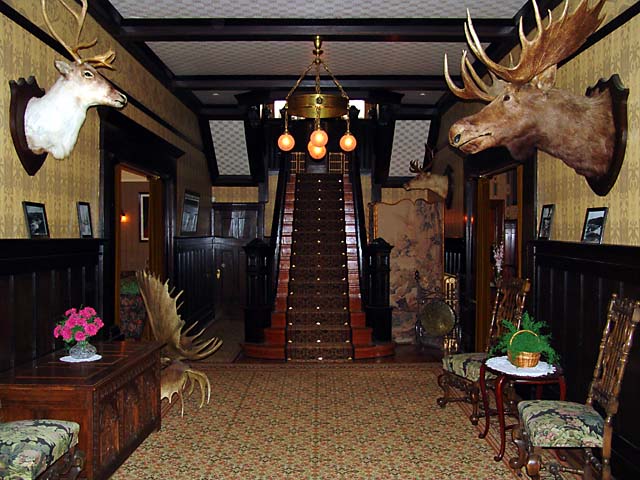
The entryway of the commissioner's residence. The furnishings are
historically correct, since the residence had been well photographed in the
early 1900's.
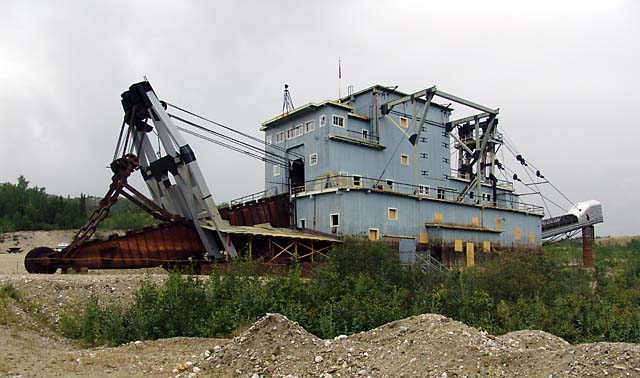
This dredge is also maintained by Parks Canada; when it was in operation it
floated in its own pond of water, dug up gravel, processed it to remove the
gold, and then deposited the gravel back on the ground. It was capable of
digging 600 tons of gravel per hour, and at its peak, recovered about 50 pounds
of gold every four days.
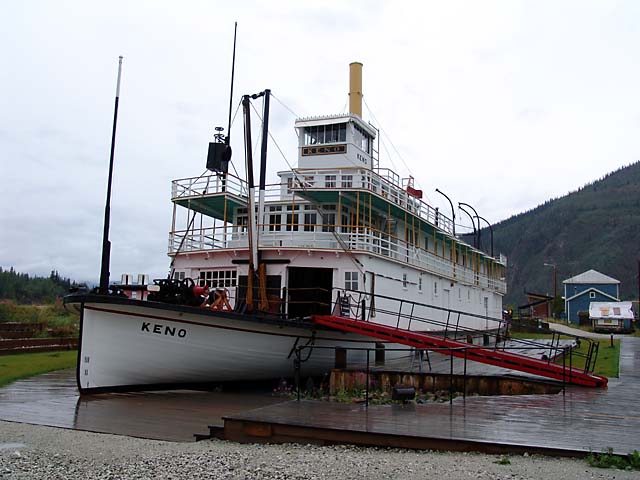
After the railroad from Skagway to Whitehorse was completed in 1900, goods
were shipped by rail to Whitehorse and then loaded onto riverboats for
transportation down the Yukon River to Dawson City. Because the Yukon is
shallow, steam powered sternwheelers worked best. Fully loaded, the SS Keno
(shown here in dry dock) draws only about 3 feet of water. To increase capacity,
they often pushed a barge ahead of the steamboat. Steamboats continued in
service on the Yukon river until the 1950's.

Traveling upstream in a sternwheeler required about 1 to 2 cords of wood per
hour. The SS Keno carried 18 cords of wood, so it was necessary to frequently
stop and take on more wood. The picture shows one cord of wood. Imagine the work
required to push one of these logs into the firebox every minute, or faster!

After Dawson we headed south on the Klondike highway and then northeast on
the Silver trail. At the end of the Silver trail is the little town of Keno
(population 15). The area was famous for silver mining until the mines closed,
about 15 years ago. Now Keno is essentially a ghost town, but it has a very nice
museum that specializes in mining and the history of the area.

The owner of this house in Keno used beer bottles to help insulate the walls.
(The insert is a blow-up to better show the bottles.) I don't know about its
insulation value, but after drinking all that beer, I don't think the owner was
feeling the cold!
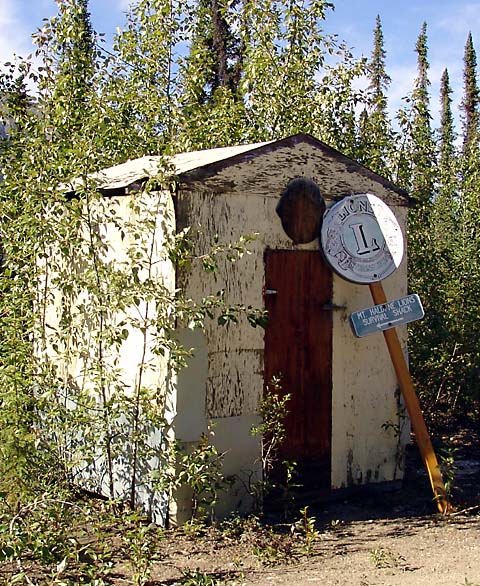
The local Lions Club put up these survival shelters for winter travelers that
became stranded. Inside there was a wood stove and some wood, but not much else.
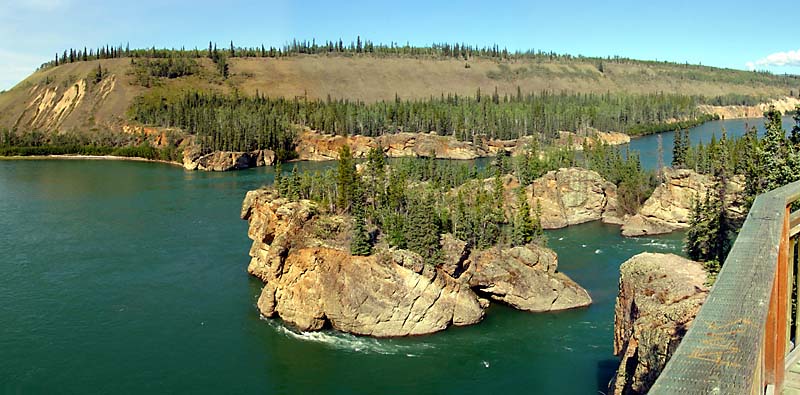
Returning to the Klondike highway we continued south and came upon the Five
Fingers Rapids, which were one of hazards encountered by the steamboats on the
Yukon river. To get upstream through the rapids, they lined the boat through the
narrow channel using a steel cable permanently attached to the rocks. The
nearest channel was the safer route to use; the channel has been widened by
blasting the rocks.

We met this couple in the parking lot for the Five Finger Rapids; they are
from Munich, Germany and are on a cycling tour of North and South America. They
started at the southern tip of Argentina in November, 2002 and have been making
their way north ever since. The map they are holding shows the route they have
followed. From here they plan to cycle up the Dempster highway to Inuvik, in the
Northwest Territories; Inuvik is about 130 miles north of the Arctic Circle.
After reaching Inuvik, they will cycle back to San Francisco to catch a flight
home.
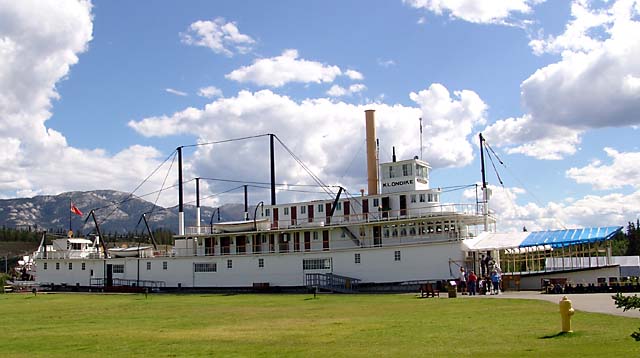
The SS Klondike is in dry dock in Whitehorse and is maintained by Parks Canada; it is currently undergoing restoration. The Klondike was used regularly on the Whitehorse to Dawson run until 1955. It took about a day and half to make the 350 miles downstream to Dawson, and about 4 days to return upstream. The Klondike is the largest steamboat that operated on this section of the Yukon River.
Whitehorse (population 22,000) is the capitol of the Yukon Territory, and by far its largest city since the entire population of the Yukon Territory is only 30,000. At Whitehorse we reached the Alaska Highway again. Next we plan to go east on the Alaska Highway to Watson Lake and then take the Cassiar Highway south.